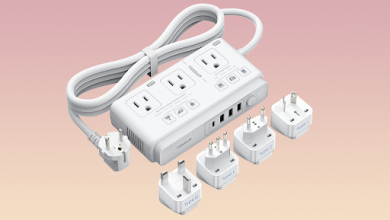The Evolution of Functional Industrial Coatings

Functional industrial coatings have undergone significant advancements over the years, evolving from basic protective layers to highly specialized coatings engineered for durability, efficiency, and performance enhancement. These coatings are used in various industries, including automotive, aerospace, construction, and manufacturing, offering protection against corrosion, wear, extreme temperatures, and chemical exposure. The development of industrial coatings has been driven by technological innovations, regulatory requirements, and sustainability concerns, leading to a new generation of advanced materials with superior properties.
Early Industrial Coatings: Basic Protection
The earliest industrial coatings were rudimentary and primarily aimed at providing a protective barrier against environmental damage. Traditional coatings, such as linseed oil-based paints and rudimentary varnishes, were used to prevent rust and decay in metal structures and wooden equipment. These early coatings had limited durability and often required frequent reapplication.
With the onset of the Industrial Revolution in the 18th and 19th centuries, the need for more resilient coatings grew as machinery, transportation, and infrastructure became more sophisticated. Oil-based paints, zinc-based coatings, and early forms of electroplating were introduced to enhance the longevity of industrial equipment.
Mid-20th Century: Advancements in Chemical Coatings
The mid-20th century witnessed a significant transformation in industrial coatings with the rise of synthetic polymers and advanced chemical formulations. The introduction of alkyd, epoxy, and polyurethane coatings revolutionized the industry by providing enhanced adhesion, chemical resistance, and mechanical durability.
Epoxy coatings became particularly popular due to their excellent corrosion resistance and adhesion properties. These coatings were widely used in automotive, marine, and infrastructure applications. Polyurethane coatings, known for their flexibility and impact resistance, were increasingly adopted in construction and industrial flooring. These advancements significantly extended the lifespan of equipment and structures while reducing maintenance costs.
Late 20th Century: High-Performance and Specialized Coatings
By the late 20th century, industrial coatings evolved beyond basic protection, incorporating specialized functionalities tailored to specific applications. Innovations such as thermal barrier coatings (TBCs) for aerospace and nanocoatings for enhanced surface properties emerged during this period.
Thermal barrier coatings, developed for jet engines and turbines, provided heat resistance, reducing wear and improving efficiency in high-temperature environments. Similarly, fluoropolymer coatings, such as polytetrafluoroethylene (PTFE), gained popularity for their non-stick and chemical-resistant properties, finding applications in chemical processing and food production industries.
Another significant development was the introduction of powder coatings, an environmentally friendly alternative to solvent-based coatings. Powder coatings, made from finely ground particles of pigment and resin, offered superior durability, aesthetic appeal, and reduced volatile organic compound (VOC) emissions.
21st Century: Smart and Sustainable Coatings
In the 21st century, the evolution of industrial coatings has been driven by smart materials and sustainability considerations. The demand for eco-friendly coatings has led to the development of waterborne, low-VOC, and bio-based coatings. These coatings reduce environmental impact while maintaining high performance.
Smart coatings, which respond to environmental stimuli such as temperature, humidity, and light, represent a breakthrough in industrial applications. Self-healing coatings, for instance, incorporate microcapsules of healing agents that release upon damage, automatically repairing scratches and extending the lifespan of the coating. Anti-microbial coatings, widely used in healthcare and food industries, prevent bacterial growth and enhance hygiene.
Another innovative advancement is graphene-based coatings, which offer exceptional strength, thermal conductivity, and corrosion resistance. These coatings are being explored for applications in aerospace, automotive, and electronics industries.
Future Trends in Industrial Coatings
The future of industrial coatings is poised for further technological breakthroughs, focusing on enhanced sustainability, nanotechnology, and multifunctional capabilities. Researchers are exploring bio-based coatings derived from renewable sources, as well as ultra-thin nanocoatings that provide unparalleled protection with minimal material usage.
Additionally, artificial intelligence and machine learning are being integrated into the coatings industry to optimize formulations, predict performance, and enhance efficiency in application processes. The rise of 3D printing technology is also influencing coating developments, enabling precision-engineered surfaces with customized functionalities.
The evolution of functional industrial coatings reflects the continuous pursuit of innovation to meet the growing demands of various industries. From simple protective barriers to intelligent, self-healing, and environmentally sustainable coatings, industrial coatings have transformed significantly over the centuries. As research and technology continue to advance, the next generation of coatings will likely redefine industrial standards, offering even greater performance, durability, and sustainability.






